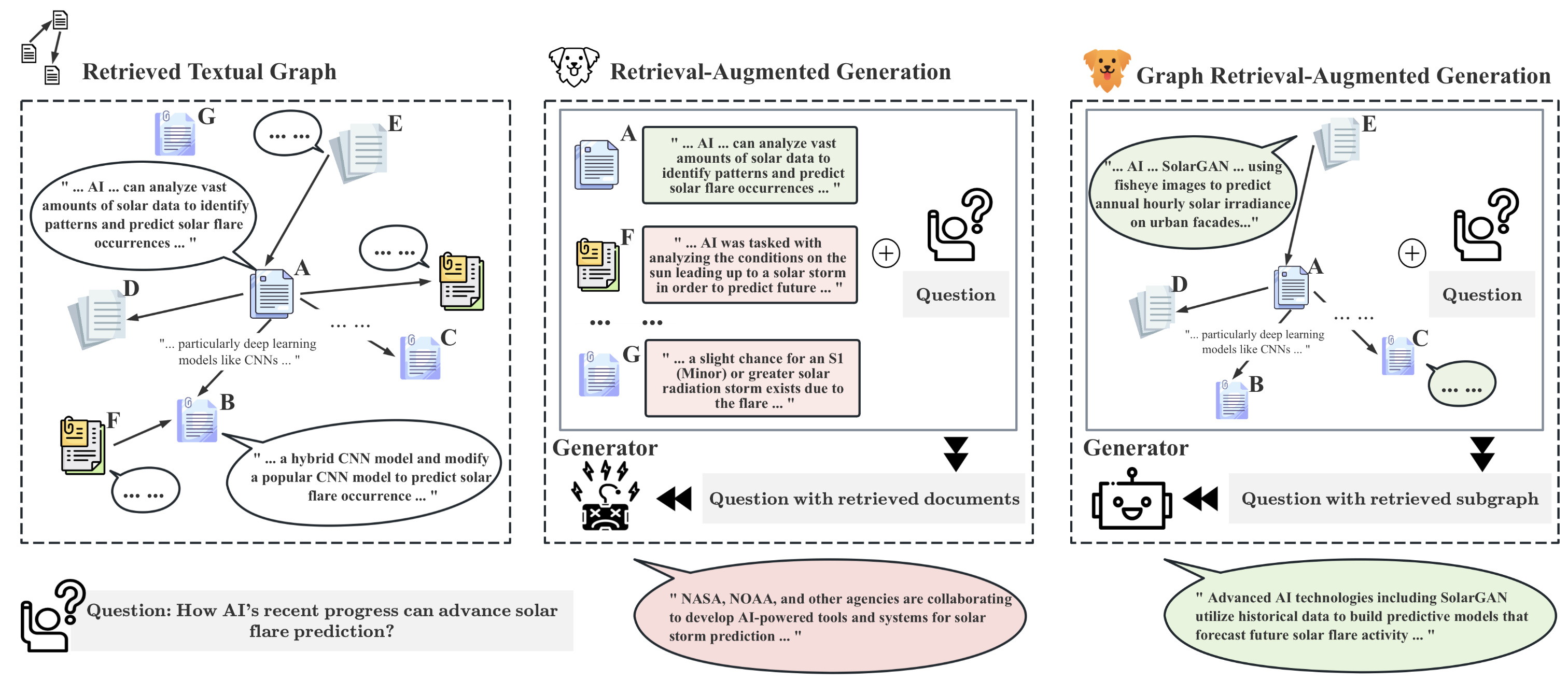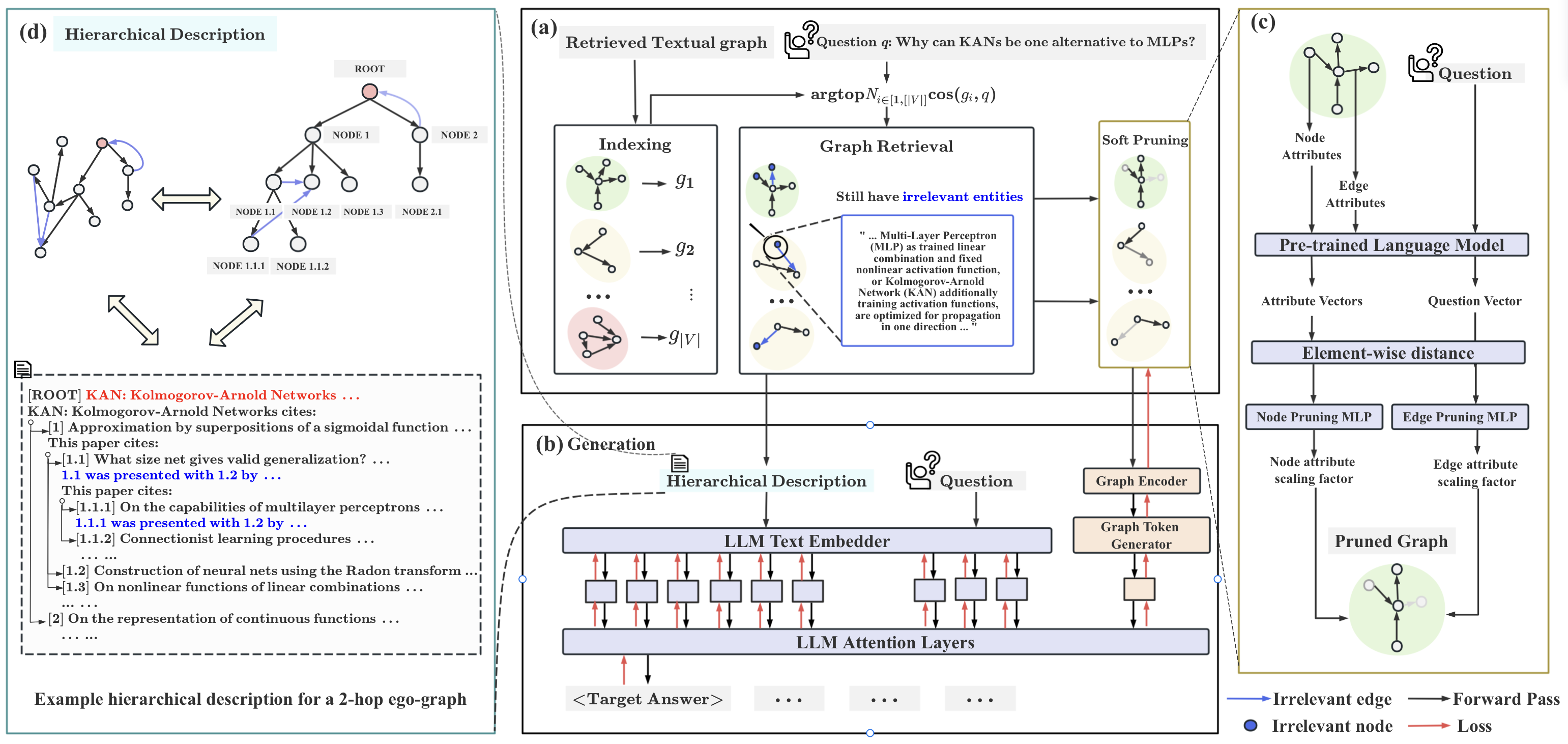|
|
1 hónapja | |
|---|---|---|
| .idea | 1 hónapja | |
| dataset | 3 hónapja | |
| figs | 3 hónapja | |
| src | 1 hónapja | |
| LICENSE.txt | 3 hónapja | |
| README.md | 3 hónapja | |
| inference.py | 3 hónapja | |
| requirements.txt | 3 hónapja | |
| run.sh | 1 hónapja | |
| train.py | 1 hónapja | |
| train_local.py | 1 hónapja |
README.md
GRAG: Graph Retrieval-Augmented Generation
Naive Retrieval-Augmented Generation (RAG) methods are not aware of the topological information of the retrieved documents / knowledge graphs, and using only text information cannot solve graph question answering scenarios:

We introduce GRAG, retrieving relevant subgraphs instead of just discrete entities. The generation of LLM is controlled by the query and the relevant text subgraph:

Try GRAG
1) Data Preprocessing
python -m src.dataset.preprocess.expla_graphs
python -m src.dataset.expla_graphs
Training
# GRAG with the frozen LLM
python train.py --dataset expla_graphs --model_name graph_llm
# GRAG with fine-tuned LLM by LoRA
python train.py --dataset expla_graphs --model_name graph_llm --llm_frozen False
Citation
@article{hu2024grag,
title={GRAG: Graph Retrieval-Augmented Generation},
author={Hu, Yuntong and Lei, Zhihan and Zhang, Zheng and Pan, Bo and Ling, Chen and Zhao, Liang},
journal={arXiv preprint arXiv:2405.16506},
year={2024}
}
Acknowledgements
- Thanks to the gpt-fast project for its code.
- Thanks to the G-Retriever contributors for their valuable work and open source contributions.
